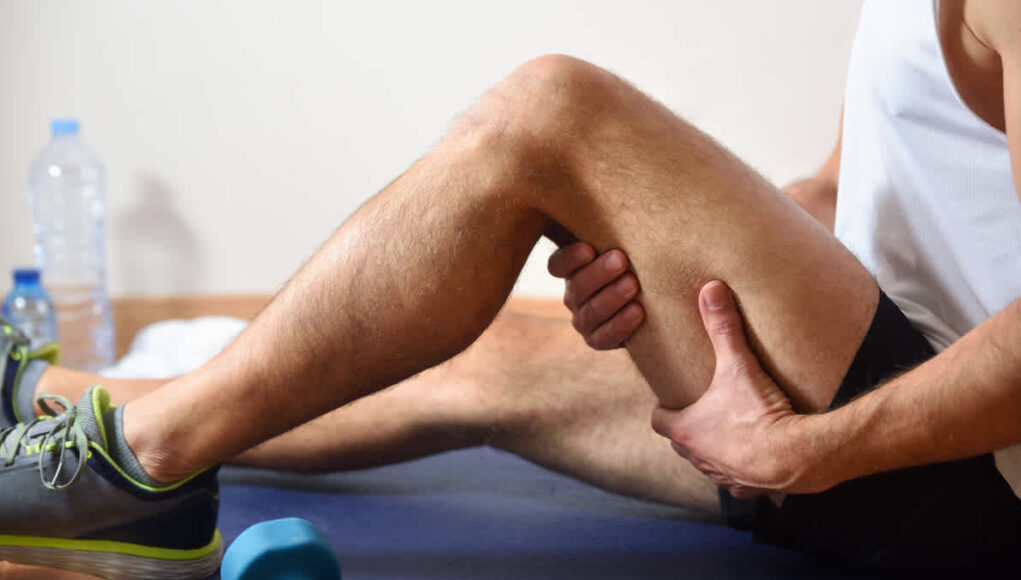You never actually notice your hamstrings until they begin yelling at you.
It may start as a dull discomfort—a nothing you’d reschedule a workout over. Perhaps you attribute it to tightness from too much sitting or minor post-run soreness. But soon, that mild tug becomes a sharp, ongoing ache near your buttocks or the back of your thigh. Bending forward is painful. Running is out. Even sitting for too long is a risk.
That’s the nature of hamstring tendonitis exercises. It’s not sensational like a tear or a snap. It gets in, hangs around, and won’t go away.
Understanding What You’re Dealing With
Let’s begin with simplicity. Hamstring tendonitis (proximal hamstring tendinopathy) has nothing to do with muscle trauma—the tendon attaches your hamstring to your pelvis. That is, that sharp, sore feeling at the back of your butt is where your hamstring attaches to your sit bone.
This injury crops up in runners, cyclists, footballers, and individuals who lead sedentary lifestyles. Prolonged sitting with contracted hamstrings? That’s enough. Resumption of high-intensity training following a pause? Yes, that as well.
The common thread is too much tension in a tendon that is unprepared for it.
What Doesn’t Work
Here’s where most people get stuck:
They stop moving entirely. They stretch aggressively.
They try to “roll it out” on a foam roller until their eyes water.
They power through their runs thinking, “Maybe if I warm it up more…”
None of that helps.
- Complete rest causes deconditioning and makes your hamstrings weaker and tighter.
- Overstretching aggravates the tendon where it connects.
- Foam rolling may ease muscle tension, but it does nothing to repair the tendon.
- And pushing through the pain? That’s a one-way ticket to chronic issues.
Tendon injuries respond best to load, but the right kind, at the right pace.
How to Actually Heal: Targeted Exercises That Respect the Process
The secret is progressive loading. That means you gradually challenge the tendon with controlled, deliberate movements that stimulate repair without causing a flare-up.
You’re not trying to “loosen” anything. You’re trying to teach your tendon how to absorb force again.
This isn’t about intensity—it’s about consistency. You won’t break a sweat doing most of these. But they’ll wake up the exact structures that need attention.
Let’s break it down into three phases.
Phase 1: Calm Things Down, Then Wake Them Up
If your pain is flaring up with walking, sitting, or any basic movement, start here. The goal is to reduce tension and initiate gentle activation.
1. Isometric Hamstring Push (Lying)
- Lie on your back with your knees bent.
- Dig one heel into the floor and push as if you’re trying to drag your heel toward your butt.
- Hold that pressure (don’t actually move) for 20 seconds.
- Rest 30 seconds. Repeat 5 rounds per side.
Why it matters: You’re stimulating blood flow to the tendon without moving the joint—ideal for pain relief and early reactivation.
2. Standing Wall Lean
- Stand tall and lean slightly forward into a wall with both hands.
- Place one foot slightly behind you, heel down, knee straight.
- Gently engage the hamstring as if pushing the wall away with your back leg.
- Hold 10 seconds. Repeat.
This subtle movement teaches the tendon to tolerate force in a lengthened position.
Phase 2: Controlled Movement Under Load
Once the sharp pain subsides and you’re walking or sitting more comfortably, it’s time to add movement. Still gentle. Still controlled. But now, the tendon starts working through a real range.
3. Hamstring Curls on a Ball or Towel
- Lie on your back with your feet on a stability ball or towel.
- Lift your hips into a bridge position.
- Slowly drag the ball or towel toward you using your heels.
- Return to the start just as slowly.
- Do 5–8 reps. Rest. Repeat for 2–3 sets.
This is eccentric loading—teaching your tendon how to lengthen under tension. It’s uncomfortable at first, but vital for long-term healing.
4. Bridge Marches
- Start in a glute bridge (hips up, heels down).
- Slowly lift one knee toward your chest, hold for 2 seconds, then lower.
- Switch legs like you’re marching in place.
- 10 slow reps per side.
It’s simple, but it demands control and balance, which helps build full-chain coordination between glutes, hamstrings, and core.
Phase 3: Rebuild Strength and Prepare for Real Life
By now, your pain is probably down. But don’t stop. This next phase is where you build the strength to prevent it from coming back. These aren’t rehab hamstring tendonitis exercises anymore—they’re just smart training.
5. Romanian Deadlifts (Bodyweight or Dumbbells)
- Stand tall, knees slightly bent.
- Slowly hinge at the hips, keeping your back flat and hamstrings loaded.
- Return to standing.
- 2 sets of 10–12, progressing to 3 sets with added weight.
This movement mimics real-life demands—lifting groceries, running hills, and reaching for the ground. You’re teaching your body to handle those forces without failing at the tendon.
6. Step-Back Lunges
- Step back with one leg, lowering into a gentle lunge.
- Push through the front heel to return to standing.
- Alternate sides.
Start small. These help reinforce hip stability and glute engagement while lightly loading the hamstring in functional positions.
Conclusion: Why Upswing Health Makes the Path Easier
In reality, healing from hamstring tendonitis is not a matter of performing that one special stretch or discovering that ideal exercise. It is a matter of the correct order, timing, and listening to your body’s rhythms—something that generic plans cannot provide.
That is where Upswing Health truly makes a difference.
You don’t have to hunt down referrals, wait weeks for a PT appointment, or try to figure it out from unclear online videos. Upswing allows you to access certified athletic trainers and orthopedic specialists remotely, so you receive a plan that accommodates your body, injury, and schedule. You’re not estimating which hamstring tendonitis exercises to attempt and for how long. You’re being led by individuals who do this daily.
And the best part? You can do it all from home without waiting rooms or insurance surprises. Upswing guides you to make decisions confidently and clearly, whether you’re in early recovery or attempting to remain pain-free after healing.
Because returning to doing what you love doesn’t have to be trial and error. It can be structured, smart, and supported.








